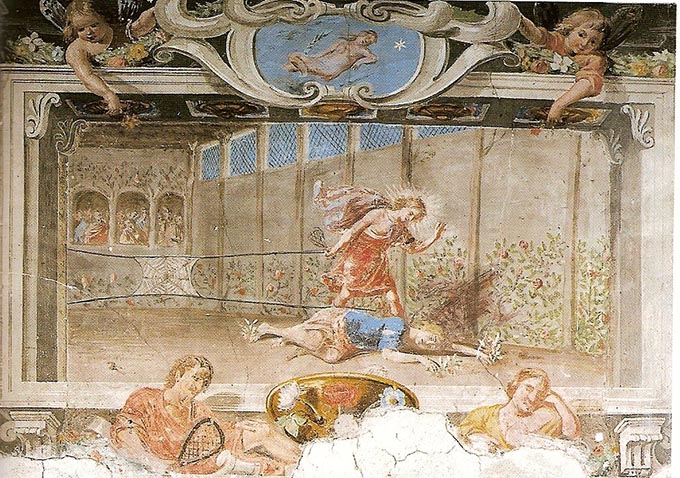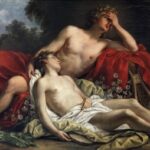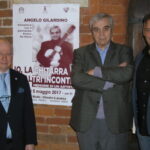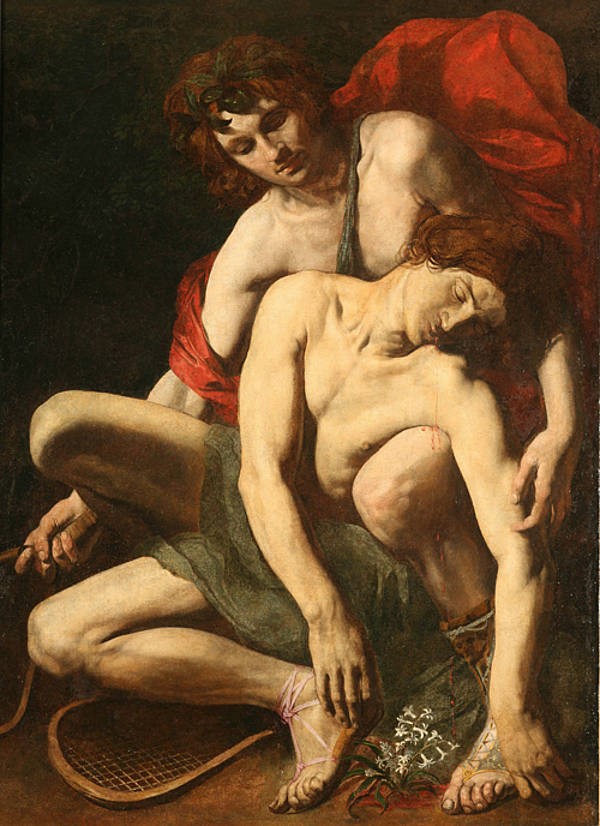
Art history is woven with narrative and myth, elements that intertwine in a continuous dialogue between past and present. In a previous analysis, I had the pleasure of exploring through the canvases of renowned artists the myth of the tragic death of Hyacinthus. This youth, beloved by the illustrious Apollo, met his death during a discus throwing competition, transformed into an instrument of vengeance by the god Zephyrus, who was also in love, but unrequited, with the handsome Hyacinthus.
The discus, the instrument of this tragedy, is represented in artworks with various interpretations. In some paintings, it is a massive and heavy discus, quite different from the modern ones used in athletic competitions. However, in other paintings, the discus gives way to rackets, a detail reflecting the cultural and artistic evolutions of the myth.
This particular iconographic metamorphosis can be attributed to the version of the myth reported by Giovanni Andrea dell’Anguillara in the 16th century. His translation of Ovid’s Metamorphoses transforms the discus throwing competition into a real tennis match, a sport very popular during the Renaissance.
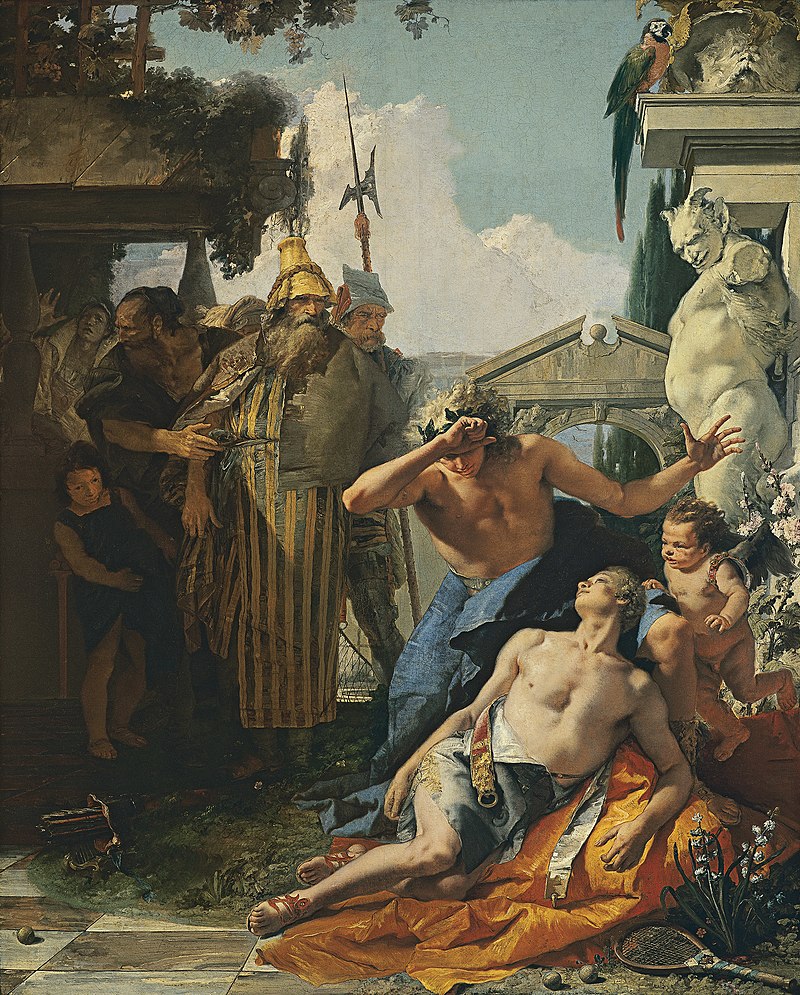
In the works of artists like Francesco Boneri, known as Cecco del Caravaggio, and Giambattista Tiepolo, we find rackets represented that are surprisingly similar to modern tennis rackets. This detail is not just an artistic anachronism but a reflection on the changing nature of mythological representation.
Boneri’s painting, in particular, seems to be influenced by an episode in the life of his master Caravaggio, who during a real tennis game ended up killing Ranuccio Tomassoni. This personal tragedy finds an echo in the fate of Hyacinthus, as if art reflected reality in unexpected ways.
Even Tiepolo’s work hides a deeper meaning, related to the patronage of Count Wilhelm of Schaumburg-Lippe. It is said to be dedicated to the memory of his lover, a Spanish musician passionate about real tennis, who tragically died under circumstances similar to those of Hyacinthus. In these stories, the universal nature of myths is reflected, which, through art, continue to speak to our souls, regardless of time and place.
